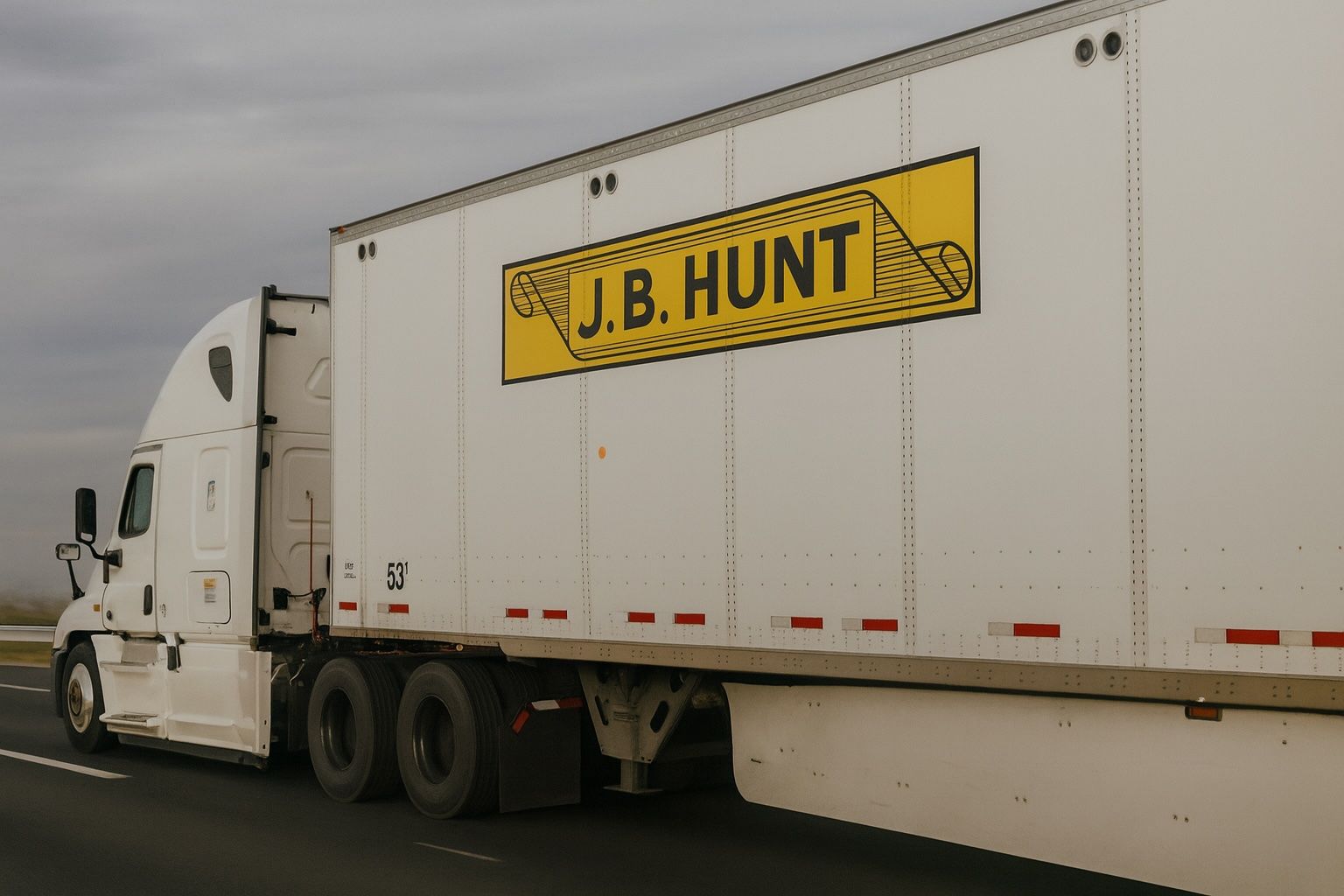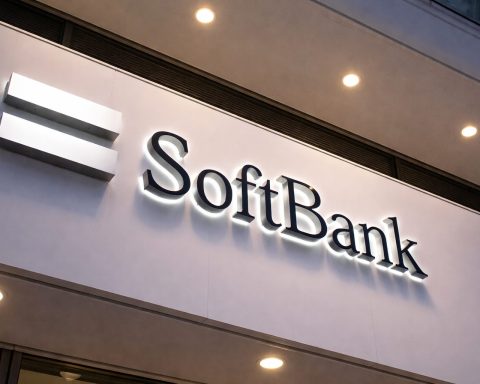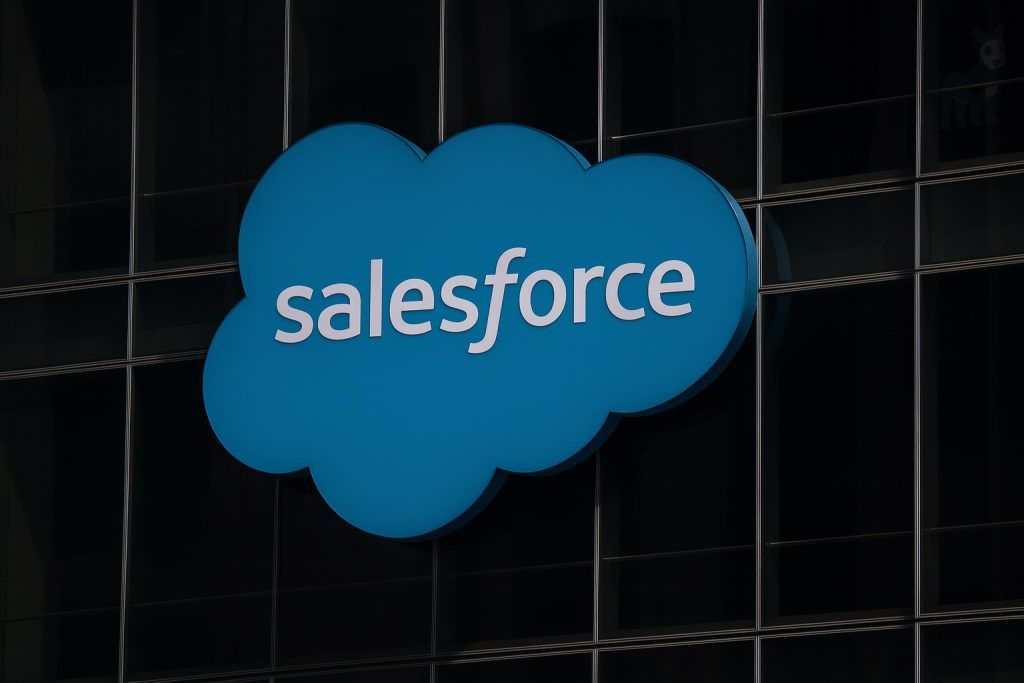- Stock Price Surge: J.B. Hunt Transport Services (NASDAQ: JBHT) stock is hovering around $169 on Oct. 17, 2025, after jumping 22% in one day on a strong earnings surprise [1]. The rally – which sent shares from about $139 to $169 – came on heavy trading volume (~6.5 million shares), far above normal levels [2].
- Earnings Beat Expectations:Q3 2025 diluted EPS was $1.76, up 18% year-over-year, smashing estimates of ~$1.47 [3] [4]. Net income hit $170.8 million (+12% YoY) on revenue of $3.05 billion (flat vs. $3.07 billion a year ago) [5]. Revenue slightly beat analyst forecasts ($3.03B) despite weak freight volumes [6].
- Cost Cuts Boost Profit: A $100 million cost-cutting initiative (route optimizations, overhead trims, etc.) helped shield JB Hunt’s margins amid a freight downturn [7] [8]. Operating income rose 8% YoY to $242.7 million [9], as efficiency gains offset lower volumes. Evercore ISI analysts even called J.B. Hunt’s improved margins a “new industry benchmark” for trucking [10].
- Positive Guidance & CEO Tone: Management struck an upbeat tone. CEO Shelley Simpson praised her team’s execution and “confidence in our long-term strategy…lowering our cost to serve” despite soft demand [11]. The company expects freight trends to stabilize, and some analysts see profit growth accelerating in 2026 if volumes rebound [12].
- Analysts Upgrade Targets: Wall Street quickly responded. J.P. Morgan raised its JBHT price target to $176 (Overweight) and BMO Capital to $180, among others [13]. Consensus analyst outlook is “Moderate Buy” with an average target around $162–$163 [14], suggesting modest upside after the stock’s recent jump. Still, many analysts are bullish on J.B. Hunt’s execution and potential in a freight recovery.
- Industry Context: The trucking and logistics sector has been in a slump since 2022, marked by excess capacity and falling freight rates [15]. J.B. Hunt’s peers like Schneider and Knight-Swift are down 14–18% over the past year [16]. However, new regulations (e.g. tighter driver licensing) could constrain driver supply, and there’s growing expectation of a freight market turnaround by 2026 [17] [18]. J.B. Hunt’s strong Q3 shows it can thrive on efficiency until a broader rebound kicks in.
J.B. Hunt’s corporate headquarters in Lowell, Arkansas. The trucking giant delivered an earnings surprise that sent its stock soaring.
Stock Rockets on Earnings Beat
J.B. Hunt’s stock exploded higher after the company’s third-quarter results blew past expectations. Shares surged from about $139 (Wednesday’s close) to $169.57 by Thursday’s close, a 22.1% one-day leap [19]. Investors haven’t seen a move like that in years – the best single-day gain in decades for J.B. Hunt’s stock, according to market watchers. The price spike came on unusually heavy trading volume (6.5 million shares traded vs. an average of ~1–2 million), reflecting intense interest from investors [20]. By Friday (Oct. 17), the stock has leveled around the mid-$160s, pausing after its dramatic jump as some traders likely take profits. Even with the pullback, J.B. Hunt’s stock is effectively flat for 2025 year-to-date (erasing earlier losses) [21], signaling that the earnings news repaired much of the year’s underperformance.
Market analysts noted that J.B. Hunt’s 22% surge far outpaced the broader market, and even gave the Dow Jones Transportation Index a boost. In fact, J.B. Hunt’s multi-week high around $165–$170 per share marks a sharp rebound for a stock that had been under pressure. “J.B. Hunt was a 2025 laggard that delivered an encouraging, better-than-expected quarter,” one Motley Fool commentary observed, explaining why the market reacted so enthusiastically. The stock’s momentum was so strong that retail traders piled in – social platform StockTwits showed message volumes up 1,700% within 24 hours and sentiment tagged “extremely bullish” right after the report [22] [23]. The FOMO (“fear of missing out”) was palpable as JBHT shares rallied nearly 18% in just a few hours post-earnings [24].
Investors are clearly rewarding J.B. Hunt’s surprise earnings beat. However, some caution that such rapid spikes can face turbulence. The coming days will test whether J.B. Hunt’s stock can hold these gains or if it pulls back as the initial euphoria fades. For now, the rally underscores how hungry the market was for good news in the trucking sector – and J.B. Hunt delivered exactly that.
Earnings Highlights & Company Statements
J.B. Hunt’s third-quarter 2025 earnings report delivered a jolt of positive news in an otherwise tepid freight environment. Net profit jumped 12% year-on-year to $170.8 million (or $1.76 per diluted share) [25] [26]. This easily beat Wall Street’s consensus of around $1.46–$1.47, an 18% upside surprise on earnings [27]. Revenues came in at $3.05 billion, essentially flat from $3.07B a year prior [28] – but notably slightly ahead of analyst estimates (~$3.03B) [29]. The top line held steady despite a soft freight market, thanks in part to J.B. Hunt’s diversified business lines and pricing gains in certain segments.
The company acknowledged that freight volumes remain weak across segments – intermodal loads fell 1%, and its brokerage (ICS) and dedicated divisions saw volume dips as well [30] [31]. Still, revenue beat expectations because declines were modest and offset by bright spots. For instance, J.B. Hunt’s truckload unit grew loads by 14% and its logistics arm increased revenue per load by 9%, helping counter softer areas [32] [33]. Excluding volatile fuel surcharge revenues, core revenue was down less than 1%, showing a near stabilization despite industry headwinds [34] [35].
Critically, cost control made the difference. J.B. Hunt has been pursuing about $100 million in cost reductions to weather the freight downturn [36]. Those efforts paid off big in Q3. The company’s operating income rose to $242.7 million (+8% YoY) [37] even on flat sales – implying better margins. Lower purchased transportation costs, workforce efficiencies, and other cuts “more than offset a soft demand environment,” according to a FreightWaves report. As Reuters noted, these ongoing cost-cutting measures helped “shield its third-quarter margins” and drive the profit beat [38]. In fact, J.B. Hunt’s operating margin improved year-over-year, a remarkable feat in a down market. Evercore ISI analysts cited in the press called it a “J.B. Hunt-specific outcome that establishes a higher margin benchmark” for the industry [39].
Management sounded optimistic that this disciplined strategy is working. CEO Shelley Simpson lauded the team for delivering “improved financial performance” and reiterated confidence in J.B. Hunt’s long-term strategy of operational excellence and cost leadership [40]. “I remain confident in our long-term strategy focused on operational excellence… and execution on efforts to lower our cost to serve,” Simpson said [41]. In other words, the company is doubling down on efficiency and service to navigate the downturn. Simpson’s statement – also quoted by outlets like Benzinga and TS2.tech – underlined that J.B. Hunt is staying resilient by controlling what it can (costs and service) while waiting for freight demand to recover [42] [43].
The Q3 report also showed segment-level insights: Intermodal (JBI) revenue dipped 2%, but operating income in that unit jumped 12% as network adjustments improved efficiency [44]. Dedicated Contract Services (DCS) grew revenue 2% and operating profit 9% [45]. The brokerage segment (ICS) saw an 8% volume drop, but still improved its results by cutting expenses and posting a smaller loss [46]. And the truckload segment revenue climbed 10% on the back of that double-digit load growth [47]. These mixed results across divisions reinforce the theme: J.B. Hunt managed to squeeze more profit out of essentially the same revenue base by tightening its belt and leveraging strengths like intermodal scale.
Another noteworthy point: J.B. Hunt’s effective tax rate dipped to 24.0% this quarter from 25.2% a year ago, thanks to resolution of certain tax positions [48]. That gave a slight boost to net earnings. Interest expense also declined, as some debts were refinanced at lower rates [49]. Every little bit helped in turning flat sales into a double-digit profit gain. Overall, the earnings report painted a picture of a company that is executing smartly in a tough environment – and being rewarded for it.
Expert Commentary and Analyst Opinions
Wall Street’s reaction to J.B. Hunt’s big quarter was swift and mostly positive. Equity analysts upgraded their forecasts almost immediately following the earnings beat. “Wall Street wasted no time updating its outlook,” TS2.Tech noted in an analysis of the stock’s surge [50]. For example, J.P. Morgan’s analyst Brian Ossenbeck hiked his price target to $176 (from $170) while reaffirming an “Overweight” rating [51]. BMO Capital Markets raised its target to $180 [52], expressing confidence that J.B. Hunt’s profit momentum can continue. Citigroup and Bank of America also reportedly lifted their targets into the mid-$170s [53]. These target boosts suggest that major firms see more upside for JBHT stock ahead – at least in the mid-term.
Market-wide analyst consensus on J.B. Hunt has tilted bullish, though there’s a range of views. According to a MarketBeat summary cited by TS2, the stock now has 1 Strong Buy, 10 Buys, and 12 Hold ratings [54]. The average 12-month price target is around $162–$163 per share [55]. Notably, that average target is actually slightly below the current trading level in the high-$160s. In other words, after the post-earnings jump, J.B. Hunt has quickly approached what many analysts previously thought it was worth. This implies some on the Street are cautious about chasing the stock much higher in the near term. Indeed, a few analysts had cut their targets just before earnings – Barclays and Susquehanna trimmed their JBHT outlooks in early October [56] – reflecting concerns about the freight slump. Those who were more bearish might now reassess in light of J.B. Hunt’s beat, but it shows that not everyone was optimistic going in.
Still, the overall tone from analysts is bullish on J.B. Hunt’s fundamentals. “Moderate Buy” is the prevailing rating consensus [57], and sites like GuruFocus classify the consensus as “Outperform” [58]. In raising targets, several analysts explicitly cited J.B. Hunt’s cost discipline and margin resilience. As mentioned, Evercore ISI praised the margin improvement as setting a new bar for the industry [59]. BMO’s team went further, predicting J.B. Hunt’s earnings could climb significantly by 2026 if current conditions hold or improve [60]. In fact, BMO reportedly forecast that J.B. Hunt might achieve $10–$11 in annual EPS when the freight cycle fully rebounds [61] – roughly double its current earnings run-rate. That kind of long-term optimism underpins some of the higher-end price targets (a few analysts’ bull-case targets run as high as the $180–$185 range [62]).
However, even bullish analysts temper their excitement with reminders of the broader context. “Our conviction is that some AI stocks hold greater promise…” quipped an Insider Monkey/Finviz commentary, somewhat humorously, after acknowledging JBHT’s potential [63]. More pragmatically, J.B. Hunt’s valuation is now on the rich side for its sector: the stock trades around 21.7× forward earnings, vs ~16× for the trucking industry average [64]. This premium suggests investors are willing to pay up for J.B. Hunt’s steady performance [65] – but it also raises the bar for future earnings. If freight demand doesn’t improve as hoped, some analysts warn that JBHT’s upside could be limited by its valuation. “J.B. Hunt now faces a high bar to justify ever-higher targets,” TS2.Tech observed, noting a degree of market skepticism lingering despite the upgrades [66].
Several analysts also advised keeping an eye on the next few quarters for confirmation of the trend. J.B. Hunt will report Q4 and full-year results in January, and management’s commentary then will be crucial. Will volumes start to bottom out? Can J.B. Hunt find additional cost savings or will it need freight to pick up to fuel further profit gains? For now, Wall Street appears impressed with how well the company is navigating a rough patch – but continued “outperformance” will be needed to push the stock beyond its new highs.
Broader Industry Trends & Outlook
J.B. Hunt’s stellar results arrive against the backdrop of a trucking and logistics industry that’s been mired in a downturn. Since late 2022, the freight sector has grappled with overcapacity (too many trucks chasing too little freight), falling spot rates, and lukewarm shipping volumes [67]. This slump followed the pandemic-era shipping boom and has weighed on virtually all transportation stocks. In this climate, many trucking companies have struggled just to tread water. For example, Schneider National (SNDR) is down about 17% over the past year, and Knight-Swift (KNX) is down roughly 14% [68]. Even highly regarded carriers like Old Dominion (which focuses on LTL freight) have seen growth stall recently [69].
What’s notable is that J.B. Hunt has outperformed its peers year-to-date, especially after this week’s rally [70]. Earlier in 2025, JBHT stock had lagged, but it is now roughly flat for the year (around -0.6% YTD) [71] while many competitors remain deep in the red. Industry watchers credit J.B. Hunt’s diversified model for this resilience [72]. The company has a mix of intermodal (rail-truck container) business, dedicated contract hauling, brokerage, final-mile delivery, etc., which gives it multiple levers to pull. During the earnings call, executives highlighted how J.B. Hunt’s scale and mode diversity help it adapt – for instance, leveraging its huge intermodal network even as rail partners merge and change service patterns [73]. This breadth may be helping J.B. Hunt weather the storm better than a pure trucking-only carrier.
Looking ahead, experts are cautiously optimistic that the freight cycle will turn upward in the next 12–18 months. “The overall outlook for a trucking recovery is improving,” reported Finimize, pointing to factors like new licensing rules that could limit driver supply [74]. Indeed, Reuters noted that regulators are tightening requirements (such as restrictions on visas for truck drivers), which could gradually reduce the oversupply of drivers and trucks by 2026 [75]. A thinner driver pool would eventually help freight rates firm up, benefiting companies like J.B. Hunt.
More importantly, a true turnaround hinges on demand – i.e. freight volumes. Thus far, consumer spending and industrial output in 2025 have been just so-so, leading to “continued low shipment volumes [that] point to broader economic sluggishness”, as Finimize observed [76]. For trucking to rebound, the economy needs to kick into a higher gear (or at least sectors like retail, housing, or manufacturing need to produce more goods to move). Analysts largely agree that 2025 will remain challenging for freight, but many forecast a pickup in the second half of 2025 or into 2026. In fact, some industry forecasts see 2026 as a breakout year, with pent-up demand and normalization driving a freight upcycle [77]. BMO Capital’s analysts told investors they expect J.B. Hunt’s earnings trajectory to “improve materially in 2026” if the cycle turns as anticipated [78].
In the meantime, J.B. Hunt’s strategy is to control what it can – cutting costs, optimizing its network, and maintaining pricing discipline – so that it’s in a position of strength when freight demand returns. The company has also been investing in technology and capacity for future growth, according to Smartkarma analysts [79]. This includes its J.B. Hunt 360 digital freight platform and perhaps keeping extra containers/trucks available to scale up quickly when needed. These moves should help J.B. Hunt capitalize on a recovery once freight markets tighten. It’s worth noting that J.B. Hunt also expanded some services (like its transload and final-mile offerings) which could pay dividends as supply chains shift.
However, risks remain. If the economic environment weakens further (for example, if consumer spending pulls back or if industrial production softens), the freight slump could drag on longer than expected. Additionally, fuel prices – always a wild card for transportation – have been volatile; higher diesel prices can crimp trucking profits (though fuel surcharge programs offset some of that). J.B. Hunt’s own outlook, while positive, is not assuming a sharp freight rebound yet. The company is preparing for “prolonged softness” but positioning to ride the eventual upswing. As one industry CEO quipped recently, “Trucking acts as a pulse check for the U.S. economy” [80] – so J.B. Hunt’s fortunes are ultimately intertwined with broader economic health.
Investor Sentiment and Trading Activity
The huge move in J.B. Hunt’s stock has been accompanied by a swell of investor interest and sentiment. In addition to traditional analysts, retail investors on forums and social media have been buzzing about JBHT. StockTwits, a popular platform for traders, briefly flagged J.B. Hunt as one of its top trending tickers after the earnings news. According to a TS2.Tech report, retail sentiment flipped “extremely bullish” immediately following the earnings beat [81]. Message volume about JBHT spiked over 1,700% within a day of the report [82] – a sign that many who don’t usually follow this trucking stock jumped into the conversation. Memes and posts celebrated J.B. Hunt’s rally, with some users noting the stock’s long-term quality finally being recognized.
On the trading side, Thursday’s volume of ~6.5 million shares was about 3× J.B. Hunt’s daily average, confirming that institutions and retail alike were aggressively buying (or covering short positions) [83]. It’s likely that some short sellers were caught off guard by the earnings surprise, which can add fuel to such a sharp move upward. The term “short squeeze” was mentioned by a few market commentators, suggesting that at least part of the 22% jump was exacerbated by bears scrambling to buy back shares.
From a technical analysis perspective, J.B. Hunt’s stock broke through several key resistance levels during its surge. It powered well above its 50-day and 200-day moving averages (which were in the $150s and $160s, respectively), turning those into potential support levels now. Chart analysts note the stock’s next test could be the $170–$173 zone, which roughly coincides with highs from late 2024 and the early 2025 range. If JBHT can consolidate above $170, some believe it could run toward its all-time highs (around $200, set back in 2021). On the flip side, any pullback could see support in the mid-$150s (the pre-breakout level). The Relative Strength Index (RSI) on JBHT spiked with the move, indicating the stock went short-term overbought – again hinting a period of cooling off or sideways trading might occur after the initial jump.
Fundamentally, J.B. Hunt’s price-to-earnings ratio has expanded due to the stock’s rise. As noted earlier, it’s now about 21.7× forward earnings vs ~16× for peers [84]. This premium valuation reflects investors’ confidence in J.B. Hunt’s stability and growth prospects, but it also means the stock isn’t a “bargain” on traditional metrics. The company does pay a dividend (currently yielding around 1% on the new stock price) and has been buying back shares (nearly 1.6 million shares repurchased in Q3 per the earnings release) [85] [86]. Those shareholder returns are a plus, but the real focus is on growth and margins – where J.B. Hunt just proved it can deliver even in tough times.
Overall investor sentiment on J.B. Hunt has swung positive after Q3. The combination of a big earnings beat, upbeat management commentary, and analyst upgrades has created a sense that “maybe the worst is over” for this transportation bellwether. As one article’s headline put it, “J.B. Hunt’s unforeseen Q3 win sparks market buzz.” The key question now is whether the company can build on this momentum. If freight demand picks up into 2026 and J.B. Hunt continues to execute, bulls argue the stock could have more room to run (some forecasts are already looking to earnings power in a recovery scenario). But if the freight slump persists longer, the stock might be range-bound as investors wait for clearer signs of growth.
Conclusion
J.B. Hunt Transport’s latest results have provided a shot of optimism to both its shareholders and the broader logistics sector. The stock’s 22% surge after earnings – its biggest single-day jump in recent memory – shows just how stunned and pleased the market was by the company’s performance [87]. A potent mix of an earnings beat, improved margins via cost cuts, and upbeat forecasts from analysts has cast J.B. Hunt in a favorable light going into year-end. Key metrics are all pointing upward: profit growth, margin expansion, and even operational efficiency benchmarks are the best they’ve been in some time.
Yet, this rally also comes with a healthy dose of realism. J.B. Hunt’s fate is still tied to the freight cycle, which remains in a lull. The company has proven it can “do more with less” – squeezing out profit gains despite flat revenue – but sustaining double-digit earnings growth will require at least a modest pickup in freight volumes eventually. The stock’s current price already factors in much of the good news, trading near many analysts’ price targets. That means to climb further, J.B. Hunt will likely need either continued earnings surprises or signs that the trucking downturn is definitively ending.
For now, investors seem happy to celebrate J.B. Hunt’s resilience. The company delivered exactly what everyone had been waiting for: evidence that a well-run transport firm can still thrive in a challenging market. As a result, J.B. Hunt has become a market darling (at least for this week), with traders and analysts alike singing its praises. The coming months will tell if this is the start of a sustained uptrend – potentially heralding a broader freight sector revival – or just a short-lived pop. In either case, J.B. Hunt’s Q3 2025 will be remembered as a standout moment when smart strategy and a bit of luck converged to defy the odds in trucking. The bar is set higher now, but if J.B. Hunt can clear it, shareholders may continue to reap the rewards.
Sources: Company earnings release [88] [89]; Reuters [90] [91]; Yahoo Finance/Zacks [92]; TS2.tech [93] [94]; Finimize [95] [96]; Smartkarma [97]; FreightWaves via Yahoo; Motley Fool; MarketBeat; and other financial news outlets.
References
1. finviz.com, 2. www.smartkarma.com, 3. www.nasdaq.com, 4. finviz.com, 5. www.reuters.com, 6. www.reuters.com, 7. finimize.com, 8. finimize.com, 9. www.jbhunt.com, 10. finimize.com, 11. www.jbhunt.com, 12. ts2.tech, 13. ts2.tech, 14. ts2.tech, 15. finimize.com, 16. ts2.tech, 17. finimize.com, 18. ts2.tech, 19. finviz.com, 20. www.smartkarma.com, 21. www.smartkarma.com, 22. ts2.tech, 23. ts2.tech, 24. ts2.tech, 25. www.jbhunt.com, 26. www.reuters.com, 27. www.nasdaq.com, 28. www.reuters.com, 29. www.reuters.com, 30. www.jbhunt.com, 31. www.reuters.com, 32. www.jbhunt.com, 33. www.nasdaq.com, 34. www.nasdaq.com, 35. www.nasdaq.com, 36. finimize.com, 37. www.jbhunt.com, 38. ts2.tech, 39. ts2.tech, 40. www.jbhunt.com, 41. www.jbhunt.com, 42. ts2.tech, 43. ts2.tech, 44. www.nasdaq.com, 45. www.nasdaq.com, 46. www.nasdaq.com, 47. www.nasdaq.com, 48. www.jbhunt.com, 49. www.jbhunt.com, 50. ts2.tech, 51. ts2.tech, 52. ts2.tech, 53. ts2.tech, 54. ts2.tech, 55. ts2.tech, 56. ts2.tech, 57. ts2.tech, 58. ts2.tech, 59. finimize.com, 60. finimize.com, 61. ts2.tech, 62. ts2.tech, 63. finviz.com, 64. finimize.com, 65. finimize.com, 66. ts2.tech, 67. finimize.com, 68. ts2.tech, 69. ts2.tech, 70. ts2.tech, 71. www.smartkarma.com, 72. ts2.tech, 73. ts2.tech, 74. finimize.com, 75. ts2.tech, 76. finimize.com, 77. ts2.tech, 78. ts2.tech, 79. www.smartkarma.com, 80. finimize.com, 81. ts2.tech, 82. ts2.tech, 83. www.smartkarma.com, 84. finimize.com, 85. www.nasdaq.com, 86. www.nasdaq.com, 87. finviz.com, 88. www.jbhunt.com, 89. www.jbhunt.com, 90. www.reuters.com, 91. ts2.tech, 92. finviz.com, 93. ts2.tech, 94. ts2.tech, 95. finimize.com, 96. finimize.com, 97. www.smartkarma.com









